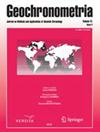Radiocarbon Dated Pulse and Cereal Crops Indicate Diachronic Use of Iron Age Extreme Upland Sites in the Western Carpathians, Slovakia
IF 0.9
4区 地球科学
Q3 Earth and Planetary Sciences
引用次数: 0
Abstract
Abstract Mountain summits in the Slovak part of the Western Carpathians bear evidence of human presence from the Late Bronze to the Late Iron Age. According to fire-induced changes in archaeological record and finds of weaponry, some of the extreme upland sites (EUS) were viewed as places of safety or refugia violently destroyed within a short period. We have focussed on three sites with summits at 1300–1550 m a. s. l. and found out that two of them were used in 650–400 calBC and 390–150 calBC, respectively. By the first systematic use of 14C dating and targeted 14C sampling, we have overcome the inherent chronological imprecision of their artefactual record and opened new vistas for interpretation of this type of sites.放射性碳年代的脉冲和谷物作物表明斯洛伐克喀尔巴阡山脉西部铁器时代极端高地的长期使用
摘要喀尔巴阡山脉西部斯洛伐克部分的山峰上有青铜时代晚期至铁器时代晚期人类存在的证据。根据火灾引起的考古记录和武器发现的变化,一些极端高地遗址被视为安全场所或避难所,在短时间内遭到猛烈破坏。我们重点研究了三个峰值位于1300–1550 m a.s.l.的地点,发现其中两个分别用于650–400 calBC和390–150 calBC。通过首次系统地使用14C定年和有针对性的14C采样,我们克服了其人工记录固有的时间不精确性,并为解释这类遗址开辟了新的前景。
本文章由计算机程序翻译,如有差异,请以英文原文为准。
求助全文
约1分钟内获得全文
求助全文
来源期刊

Geochronometria
地学-地球科学综合
CiteScore
2.20
自引率
0.00%
发文量
1
审稿时长
>12 weeks
期刊介绍:
Geochronometria is aimed at integrating scientists developing different methods of absolute chronology and using them in different fields of earth and other natural sciences and archaeology. The methods in use are e.g. radiocarbon, stable isotopes, isotopes of natural decay series, optically stimulated luminescence, thermoluminescence, EPR/ESR, dendrochronology, varve chronology. The journal publishes papers that are devoted to developing the dating methods as well as studies concentrating on their applications in geology, palaeoclimatology, palaeobiology, palaeohydrology, geocgraphy and archaeology etc.
 求助内容:
求助内容: 应助结果提醒方式:
应助结果提醒方式:


